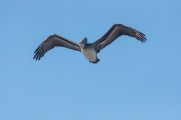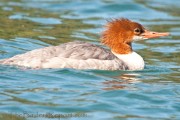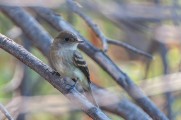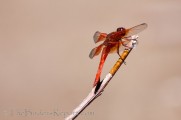The Arcata Marsh and Wildlife Sanctuary is a world famous innovative wetland system built as a cost effective and environmentally sound wastewater treatment solution. Located at the north end of Humboldt Bay, the sanctuary is situated along the Pacific flyway and provides homes and migratory resting places for over 270 species of birds. We will join the Redwood Region Audubon Society’s weekly tour of the Sanctuary meeting at the Klopp Lake parking lot at the foot of ‘I’ St. at 8:30am. Needless to say, most folks will want to stay in a motel in Arcata to avoid the 3-hour drive so early in the morning. Your leader, Bill Oliver, suggests that all those staying over meet for dinner Friday night. Contact him Ph: 530-941-7741 or Email: wwoliver9@gmail.com
Tag: Wintu Audubon
Local Weekday Bird Walk at Anderson River Park
Anderson River Park is a gem of riparian habitat with many groomed trails. Birdlife is always abundant in the Sacramento River riparian, now with the drought it is a real “hot spot”. We will look for fall migrants and early winter residents. Meet our leader, Ken Bachman at the amphitheater in the Park for this ½-day outing.
Second Saturday Bird Walk at John Reginato River Access Trail
Bird life on the Campus of Shasta College, our regular fall walk, is expected to be sparse as all the water sources are dry. So again as we did last year we have switched the outing to the John Reginato River Access Trail. This trail leaves the parking lot of the John Reginato Boat Launch on the west side of the Sacramento River off South Bonnyview Road. Good views of the Sacramento River are afforded on this short trail as it traverses a mixed riparian woodland. We should see a variety of fall migrants such as Willow Flycatcher, Nashville, Yellow and Orange-crowned Warblers and possibly a few recently arrived winter residents. Meet our leader, Chad Scott, at the parking lot on the south side of the Redding Civic Auditorium. This ½-day walk is open to the public and all birding skill levels are welcome.
Climate Change is Beginning to Take Its Toll on Bird Populations
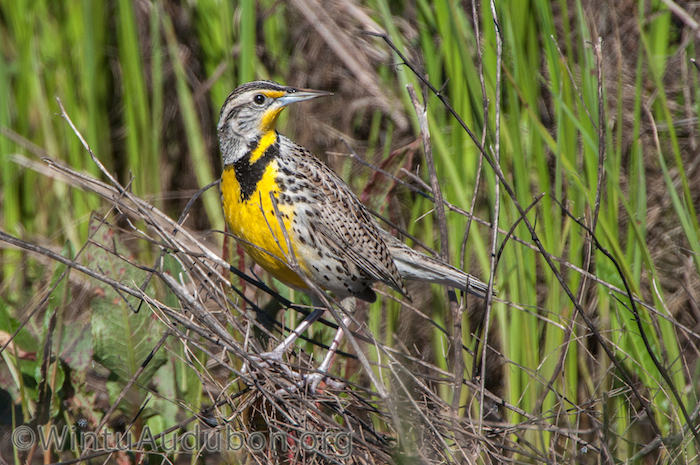
Last month I wrote about insect-eating birds swarming into Shasta County to raise their young. Unfortunately, I was indulging in a bit of optimistic nostalgia. The migration itself is as real as ever, but our nesting numbers are dismally down.
It can’t really be a surprise. Everything needs its habitat, and in actions that seemed reasonable, we have converted much wildland to more prosaic purposes. But the yellow-headed blackbird can’t nest where the marsh is drained, nor can the meadowlark make a home where grasslands are converted to row crops. The thrasher can’t sing where the chaparral is cut for houses, or the pet cat kills its young. The kestrel can’t nest where old woodpecker holes have been cut down to reduce hazards, and the pygmy owl can’t stalk grasshoppers where the woodland is paved into yet another retail center.
Driving up the valley as a kid it seemed there was a hawk on every telephone pole. But we reasonably want produce, and farmers pragmatically maximize their production. So after forty years of our plowing through the lairs of fieldmice, gophers, and snakes, of course the hawk numbers are down; after forty years of pesticides to kill hungry insects, of course the songbirds are reduced; after more recent advances to mow right to the fenceline, of course the hedgerow birds are gone.
Unfortunately, our personal perceptions of too-quiet treetops, empty telephone poles, and vacant fencelines are confirmed by research around the globe. Complementing the 115 year old Christmas Bird Count, the North American Breeding Bird Survey has run each May since 1966. It documents declines of 40-60% in a quarter of our birds, and up to 96%, depending on the species and region.
And that’s what has happened already. Now farm produce is being bio-engineered to withstand yet more pesticides, and their application has begun. Climate change is beginning to take its toll. At current carbon emission projections, 314 of 588 species studied by Audubon will lose at least half their seasonal habitat within the lifetime of this year’s graduates.
Many birds will face challenges as seasons unsynchronize: hummingbirds can’t sip on flowers that have already fruited, and fields gone dry offer fewer insects to bring to the nest. Some birds will be unable to shift northward as quickly as this climate change is demanding—especially if they need vegetation that moves north more slowly. Those who successfully shift will encroach on existing nesting grounds; ravens, which eat eggs and nestlings, are already increasing in the arctic, and invaded tundra birds have no Farther North to flee to.
As in most places, in Shasta County we have not, to my knowledge, lost any entire bird species in recent history. But the music is fainter, the voices fewer. Not so long ago, when the canaries started dying we recognized a problem and acted on it. We should be so wise and disciplined today.
Ponds for our Parched Native Neighbors
Did you know that ponds use less water than lawns while providing many other benefits? Kathy Biggs, wildlife ponderer for over 20 years, will teach us how a wildlife pond differs from a pond built for exotic Koi and water lilies. She will show us how a wildlife pond can be used, in this time of drought, to help our native neighbors. Kathy has attempted to document the critters that visit and even breed in her two wildlife ponds (one in Sonoma County and the other in Siskiyou County) for a combined 26+ years. While sharing her pond’s visitors with us, she will introduce us to our native pond flora and fauna. She has recorded 13 species of mammals (including a bear that swims in their McCloud pond), over 60 species of birds, 6 species of reptiles and amphibians, 28 species of dragonflies (her specialty), 27 different kinds of butterflies and many many other insects and other critters.

